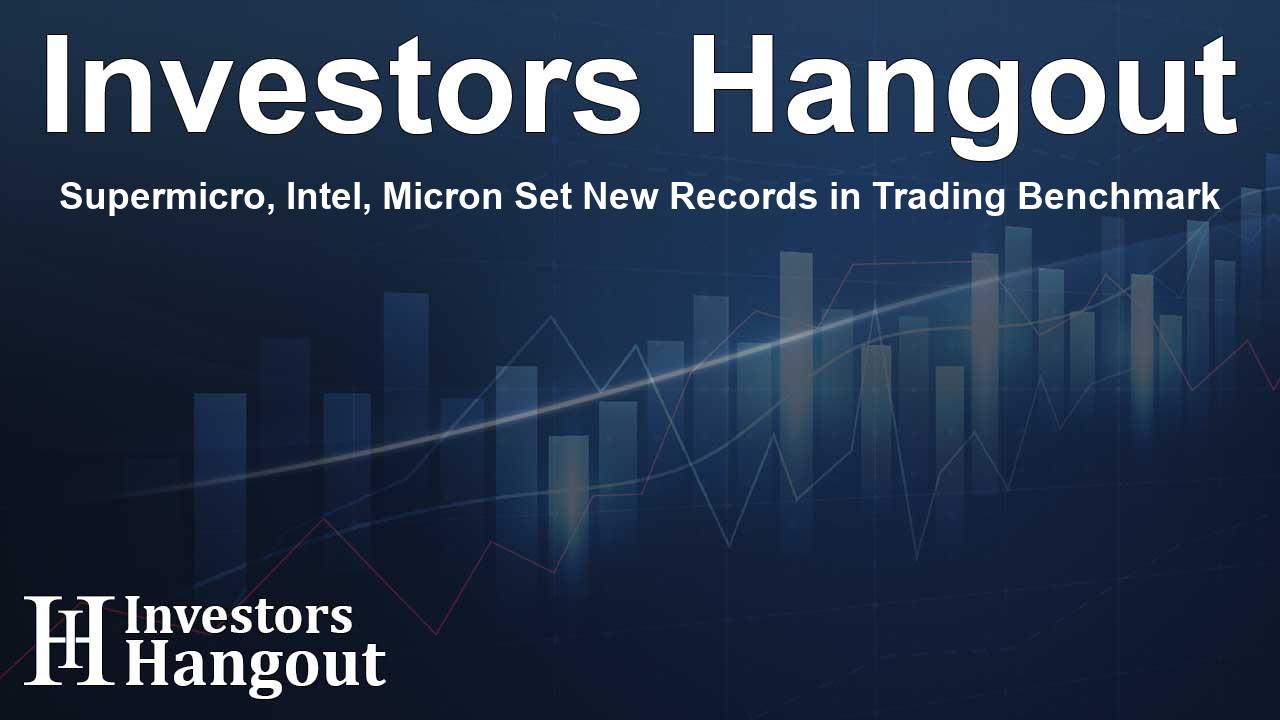Supermicro, Intel, Micron Set New Records in Trading Benchmark

Innovative Collaboration for Trading Excellence
Super Micro Computer, Inc. (NASDAQ: SMCI), in partnership with Intel and Micron, achieved remarkable success in breaking records for the STAC-M3 benchmark, a standard for evaluating the performance of technology used in quantitative trading and backtesting workflows. This collaboration was officially announced during the prestigious STAC Summit held in New York City.
Understanding the STAC-M3 Benchmark
The STAC-M3 benchmark plays a critical role in measuring the capability of time-series databases, highlighting their performance in handling algorithmic trading scenarios. By utilizing powerful infrastructure from Supermicro, alongside Intel's latest Xeon 6 processors and Micron's high-performance SSDs, this collaboration demonstrates a robust approach to optimizing trading functionality.
Performance Highlights
Latest results from the benchmark indicate that lower latency queries significantly enhance algorithm testing, allowing more trading strategies to be tested efficiently. This improvement translates to faster response times crucial for high-frequency trading environments where every microsecond can lead to significant financial gains or losses.
Collaboration Driving Technological Advancements
Vik Malyala, SVP Technology & AI at Supermicro, remarked on the significance of these results: "This achievement reflects our focus on product design and our strategic partnerships with Intel, Micron, and KX Software. Together, we are committed to delivering cutting-edge technology that helps our clients gain a competitive edge in trading performance. The results underscore the importance of time-to-market advantages in high-frequency trading settings."
What Factors Contributed to the Record-Breaking Results?
The technology configuration that led to the record-breaking results included Supermicro's Petascale servers, equipped with the latest Intel Xeon 6 processors. These servers achieved impressive processing times, completing a 100-user benchmark 36% faster while using significantly fewer CPU resources than previous record holders. This exceptional performance confirms the efficiency of the system architecture developed by Supermicro.
Real-World Implications of the Results
Firms engaging in high-frequency trading must handle vast amounts of data daily to stay competitive. The STAC-M3 benchmark tests the capabilities of financial institutions to react swiftly to market movements, leveraging detailed tick data analyses that inform trading decisions. With the unprecedented performance showcased, companies can now process massive datasets with minimal delay, enhancing profitability and risk management.
Components of the Successful Benchmark
The benchmark consisted of six Supermicro storage servers that utilized Intel Xeon 6 processors along with Micron 9550 NVMe SSDs and DDR5 memory. This combination served to deliver optimized performance, allowing for substantial scalability and low latency crucial for demanding financial applications. Additionally, the KX Systems’ kdb+ database was a pivotal component in deriving real-time insights from historical and current trading data.
Looking Ahead: Future of Trading Technology
As trading technologies continue to evolve, the collaboration amongst these industry leaders represents a significant milestone in advancing performance metrics in quantitative trading. Alvaro Toledo of Micron stated, "The results of the STAC-M3 benchmark not only showcase our products' capabilities but also highlight our commitment to empowering traders with the tools they require to thrive in today's fast-paced market environment."
Conclusion
The remarkable results achieved through the collaboration of Supermicro, Intel, and Micron at the STAC Summit set a new standard for performance in the financial technology space. As this field continues to grow, such partnerships will be instrumental in driving innovation and maintaining competitiveness in quantitative trading.
Frequently Asked Questions
What is the STAC-M3 benchmark?
The STAC-M3 benchmark measures the performance of time-series databases used for algorithmic trading and financial research, enabling firms to optimize strategies.
How did Supermicro achieve record performance?
Utilizing advanced technology such as Intel Xeon 6 processors and Micron SSDs, Supermicro optimized system architecture for lower latency and higher throughput.
Why is low latency important in trading?
In trading, low latency is critical as it allows firms to execute trades faster, resulting in better prices and enhanced competitiveness in the market.
What technologies are involved in the benchmark test?
The benchmark involved Supermicro servers, Intel processors, Micron SSDs, and the kdb+ database, collectively enhancing processing capabilities for financial data.
What are the implications of these results for financial firms?
The results demonstrate that firms can now process more data significantly faster and more efficiently, which could improve trading profits and risk management strategies.
About The Author
Contact Kelly Martin privately here. Or send an email with ATTN: Kelly Martin as the subject to contact@investorshangout.com.
About Investors Hangout
Investors Hangout is a leading online stock forum for financial discussion and learning, offering a wide range of free tools and resources. It draws in traders of all levels, who exchange market knowledge, investigate trading tactics, and keep an eye on industry developments in real time. Featuring financial articles, stock message boards, quotes, charts, company profiles, and live news updates. Through cooperative learning and a wealth of informational resources, it helps users from novices creating their first portfolios to experts honing their techniques. Join Investors Hangout today: https://investorshangout.com/
The content of this article is based on factual, publicly available information and does not represent legal, financial, or investment advice. Investors Hangout does not offer financial advice, and the author is not a licensed financial advisor. Consult a qualified advisor before making any financial or investment decisions based on this article. This article should not be considered advice to purchase, sell, or hold any securities or other investments. If any of the material provided here is inaccurate, please contact us for corrections.
